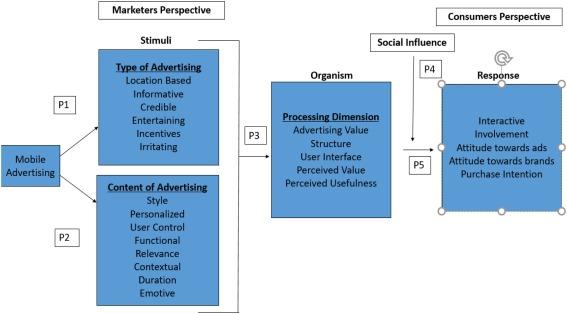Unlocking the Future: Emerging Directions for SEL in Schools
Social-Emotional Learning (SEL) has emerged as a crucial pillar in the modern education landscape. As schools face evolving challenges—from rapidly changing technology to diverse student needs—the way educators approach SEL is transforming. In this article, we’ll dive deep into the emerging directions for SEL in schools, discuss innovative trends, practical benefits, real-world case studies, and actionable tips for educators and administrators looking to future-proof their programs.
Understanding SEL: Building Foundations for Lifelong Success
SEL, or Social-Emotional Learning, encompasses the skills, attitudes, and behaviors that enable students to manage emotions, establish positive relationships, and make responsible decisions. Integrating SEL in schools is not only about improving academic outcomes; it’s about preparing students for life.
- self-awareness and self-management
- Social awareness and relationship skills
- Responsible decision-making
Wiht the growing recognition of SEL’s importance, schools are now looking to innovate and adapt SEL initiatives to meet the needs of a changing world.
Emerging Directions for SEL in Schools
The future of social-emotional learning is dynamic and promising. Here are some of the biggest trends shaping SEL in schools:
1.digital Integration and Edtech solutions
- Online SEL platforms: Interactive apps and platforms help reinforce SEL skills through engaging activities and real-time feedback.
- Data-driven insights: Analytics and reporting tools help educators track progress and personalize SEL interventions.
- Blended learning: Combining in-person and virtual methods for more inclusive and flexible SEL delivery.
2. Culturally Responsive SEL
Schools are increasingly adopting SEL approaches that are sensitive to students’ backgrounds, cultures, and identities. This includes:
- integrating multicultural perspectives within SEL curricula
- Professional progress for teachers on equity and inclusivity
- Addressing systemic inequalities and promoting belonging for all students
3. Trauma-Informed SEL Practice
The pandemic and rising awareness of childhood trauma have prompted a shift toward trauma-informed SEL. This approach prioritizes:
- Understanding the impact of trauma on student learning and behavior
- Creating safe, predictable environments
- Strengthening teacher-student relationships to foster resilience
4. Student-Led SEL Initiatives
Empowering students to take an active role in their own SEL development is gaining momentum. Examples include:
- Peer mentoring and leadership programs
- Student voice in designing and evaluating SEL activities
- youth-led campaigns promoting mental health and emotional well-being
5. Whole-School and Community Approaches
- Engaging families and community partners in SEL programming
- Developing shared language and expectations for SEL across classrooms and grade levels
- Extending SEL skills beyond the school day through afterschool programs and community initiatives
Benefits of Forward-Thinking SEL in Schools
Schools that embrace emerging directions for SEL reap significant rewards—both for individual students and the wider community. Among the most compelling benefits:
- Higher academic achievement: SEL fosters focus, motivation, and resilience
- Improved mental health: Students develop coping strategies and emotional regulation skills
- Positive school climate: Reduced bullying and stronger peer relationships
- Career and life readiness: SEL prepares students for teamwork, communication, and conflict resolution in real-world settings
- Equity and inclusion: Culturally responsive and trauma-informed SEL helps bridge possibility gaps
Case Studies: SEL Innovation in Action
Case Study 1: edtech-Powered SEL at Lincoln Middle School
Lincoln Middle School in Seattle integrated a popular SEL app, which allowed students to log daily check-ins about their mood and stress levels. Teachers used data dashboards to identify at-risk students and initiate supportive conversations. Within a year, the school saw a 30% decrease in disciplinary referrals and improvements in overall attendance.
Case Study 2: Culturally Responsive SEL in Brooklyn
An elementary school in Brooklyn revamped its SEL curriculum to include lessons on cultural heritage, identity, and allyship. staff participated in workshops on implicit bias and trauma-informed practice. Students reported feeling more seen and valued, and educators noted stronger engagement across diverse groups.
Practical Tips to Future-Proof SEL in Your School
- Invest in Professional Development: Give educators resources and training on current SEL methodologies,digital tools,and culturally responsive strategies.
- Listen to Students: Regularly solicit feedback from students about their SEL needs and experiences. Incorporate student voice into program design whenever possible.
- Leverage Technology: Carefully choose SEL platforms and apps that align with your school’s goals, and use data to personalize support.
- Collaborate With Families: Engage caregivers early and often. Offer SEL resources for home and encourage consistent communication.
- Measure What Matters: Use evidence-based tools to measure both quantitative and qualitative outcomes. Adjust programs based on what the data shows.
- Maintain Flexibility: Stay open to new SEL frameworks, partnerships, and innovations. Education is evolving—SEL should, too!
First-Hand Experience: Voices From the field
“Integrating digital SEL tools into my classroom has opened up real conversations about mental health. We can spot challenges early and support each other better than ever before.”
— Ms. jackson, Middle School Teacher
“When our school adopted a culturally responsive SEL approach, my students became more agreeable expressing who they are. It’s powerful to see them take pride in their identities and support their peers.”
— Principal Miller, Brooklyn Elementary School
Conclusion: Preparing Students for a Changing World
As schools navigate the future, social-emotional learning must evolve to reflect the realities of a complex, interconnected world. By embracing digital innovations, prioritizing equity, and consistently centering student voice, educators can unlock new levels of growth and well-being for every learner. Adopting emerging directions for SEL in schools is not just about keeping up with trends—it’s about empowering tomorrow’s leaders with the skills, empathy, and resilience they’ll need for lifelong success.
stay curious, stay connected, and continue exploring the best in SEL. the future of education—and our students’ lives—depends on it.

